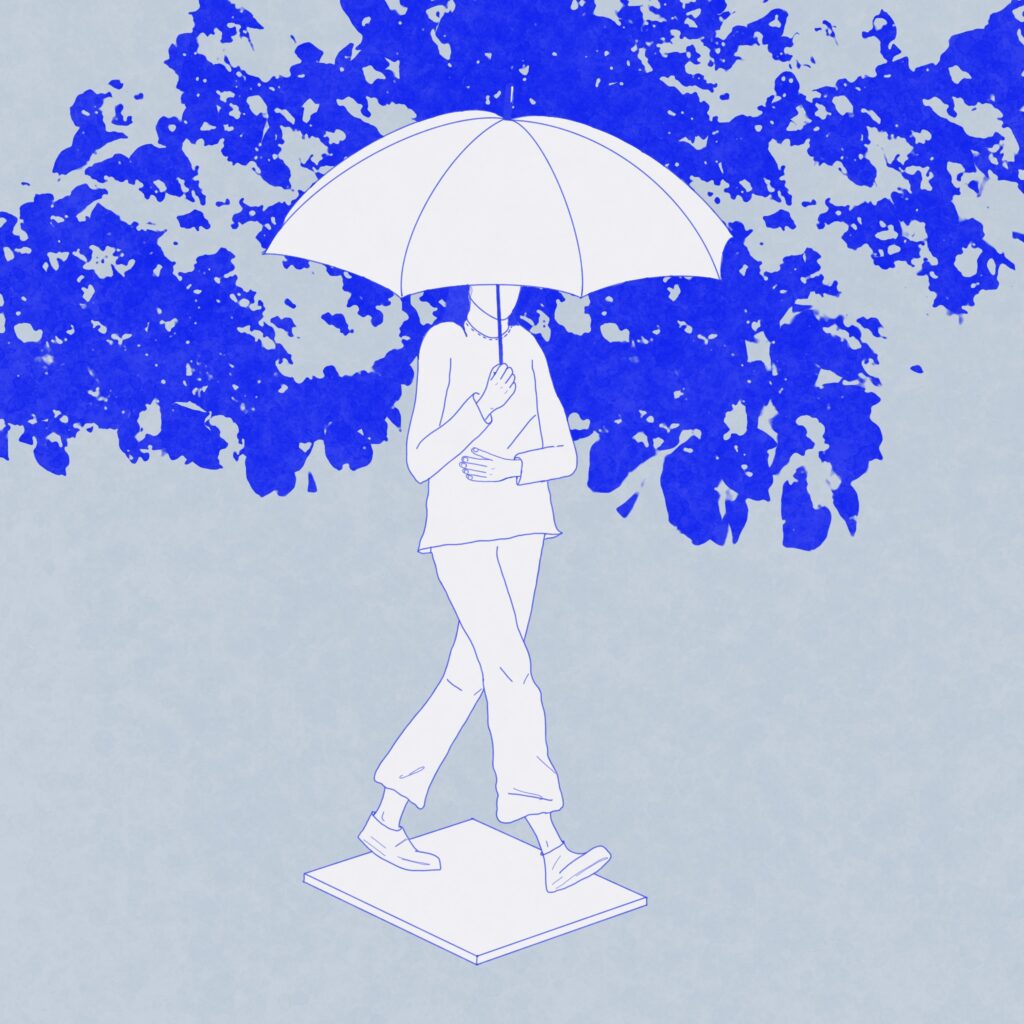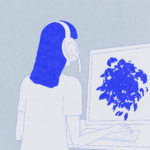WOMEN ARE NOT SAFE IN PRISHTINA’S PUBLIC SPACES

Illustration: Argjira Kukaj
In casual conversations with girls, a topic that often comes up is the reason we don’t spend our evenings in public parks. These discussions quickly take a dark turn as we recount various bitter experiences, such as being stalked by strangers, inappropriate comments, and other events that disrupt the peaceful environment of a public park.
These conversations underscore the multiple challenges women and girls face, making them reluctant to walk alone in public parks, even during daylight hours.
These conversations go beyond mere individual decisions not to frequent a certain space. Instead, they speak of a systemic issue that affects how women and girls experience parks in particular and public space in general. It’s about how these concerns are deeply embedded in women’s lives, making it difficult for them to be able to fully embrace the idea of freely enjoying public space, especially at night.
Our experiences of fear and insecurity are not isolated, but are symptomatic of the way our society is organized. The fear of girls and women is constantly fueled by the spread of gender-based harassment and violence everywhere, especially in public spaces.
A case from last year, which continues to reverberate among us, was a clear signal that public spaces are not safe for women. In August 2022, five boys and men raped an 11-year-old girl for seven hours in a public park. The information that was revealed later showed that the girl had been raped before and the institutions knew about it.
This case and the ongoing encounterss of women and girls in public spaces have made going to the park or even walking on the street synonymous with fear of harassment.
This fear is a reality that transcends conversations and seeps into women’s daily routines.
It is important to highlight that this lack of safety is intricately linked to other factors including insufficient lighting and the lack of adequate security measures in these parks. For these issues to be addressed, a comprehensive approach is necessary. Initiatives aimed at improving lighting, for example, and at implementing effective security measures can significantly increase the safety of these public spaces. Such initiatives should involve collaboration between local authorities, community groups, and residents.
This lack of safety and security is long-standing and directly affects women’s well-being. According to UN Women, the United Nations organization that focuses on gender equality, this reality “reduces the freedom of movement of women and girls. It reduces the possibility of their participation in school, work and public life. It limits their access to basic services and the enjoyment of cultural and recreational activities”.
There are several studies conducted over the years that show how these realities harm women’s experiences with green spaces. One of them is the study “The Gendered Nature of Open Spaces: Women Negotiating Fear of Violence” conducted by Jennifer K. Wesely and Emily Gaarder. The purpose of the study is to see how women’s choices for recreation in an urban park in Arizona, America, are influenced by constant fears of objectification and even assaults and rapes. The research shows that women consistently report that they monitor their surroundings for signs of danger, are reluctant to go out alone or even in the company of other women.
These strategies are part of a woman’s daily life. These precautions, such as assessing road safety, choosing specific times to go out and staying away from unfamiliar individuals, are unfortunately embedded in many women’s daily routines.
Likewise, in Kosovo, the results of the study “Safety Measurement in Public Space Platform SafoMeter: Urban Area of Prishtina” done by Gresa Neziri and Donika Çapriqi further show that public spaces have been taken away from women. Published in 2022, the purpose of this study is to measure safety in Prishtina’s public spaces. This research was carried out using Safometer, a digital platform designed to assess safety in public spaces. The research points out that the public spaces that have been evaluated as less safe are Gërmia park, the city park and the park of Arbëria. In addition to parks being rated with a low safety index, many central areas within the city of Pristina are also rated as unsafe spots. This requires immediate institutional mobilization to ensure that every woman has the opportunity to use the public space without fear or risk.
Women’s lack of access to these green spaces constitutes a restriction in several dimensions. Not only does it limit their opportunity for recreation and physical activity, it also denies them the benefits of being in touch with nature and their mental health. This situation reflects a significant lack in improving their quality of life and well-being. It also deepens gender inequality in urban environments by limiting their access and freedom of movement in public spaces.
Public parks, emblematic of shared urban environments, should be spaces where all individuals can participate without restrictions. To recognize this right and to be able to exercise it is essential, as it touches the essence of personal freedom and social equality.
When women and girls are denied the right to enjoy public parks undisturbed, they are denied a fundamental right.
Author: Era Kadriu

